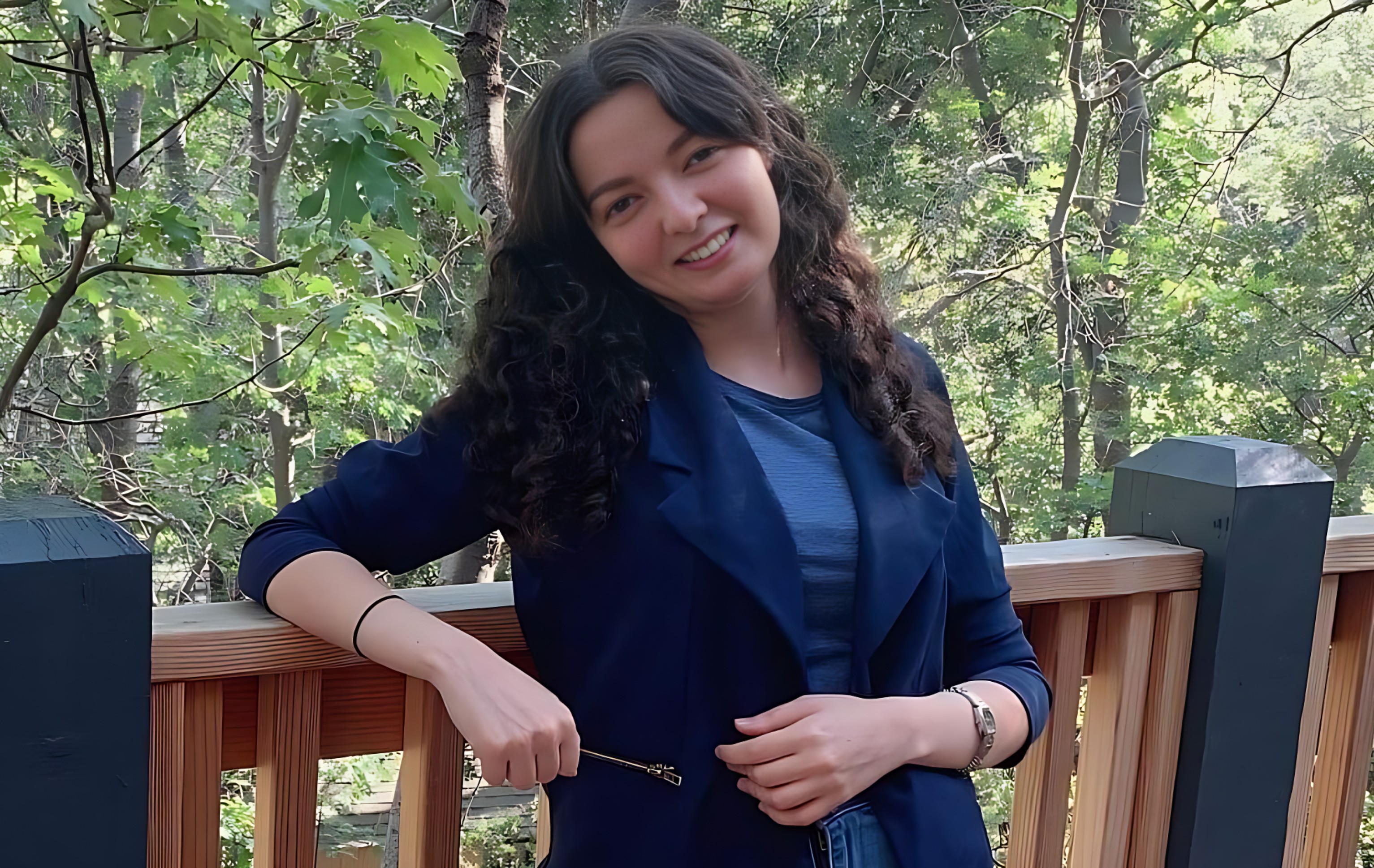In this blog post, we feature Dr. Nour Khoudari. She is a Golomb Visiting Assistant Professor in the Department of Mathematics at Purdue University, mentored by Professor Alexandria Volkening. Nour received her Ph.D. in Mathematics from Temple University, advised by Prof. Benjamin Seibold, and is the recipient of the 2025 AMS Ivo and Renata Babuška Thesis Prize. Her current research focuses on the modeling and analysis of complex biological systems.

When did you first become interested in mathematics and biology? My interest in mathematics and biology grew from a fascination with complex systems. Particularly, how individual agents interact to produce large-scale patterns. I remember watching a flock of birds twisting and turning in perfect synchronization during a family hike as a kid. There was no leader, no signal, yet somehow, they were all moving as one. That moment stuck with me, and much later I realized it was a perfect example of how simple local rules can generate beautiful global patterns. Fast forward to graduate school, I got interested in the mathematical modeling of social systems across different scales, specifically studying how traffic waves emerge from the collective behavior of individual drivers. What surprised me was how closely these dynamics mirrored those of biological systems: pigment cells interacting to form skin patterns, cells communicating through signaling networks, and birds flocking in swarms. I began exploring mathematical biology more seriously during my postdoc and now I’m hooked! For this, I am very grateful to my mentor Alexandria Volkening. The transition from modeling social behavior to studying biological systems felt natural, since both domains require understanding how local interactions scale up to global phenomena.
Was the decision to do a Ph.D. an obvious and easy choice? It was a decision I arrived at through experience rather than certainty. I have always been curious and drawn to mathematical problems, which led me to pursue a degree in mathematics. Over time, I began to realize that the problems that excited me most weren’t the ones with neat solutions at the back of the textbook. Instead, they were open-ended, messy on that couldn’t be fully explored in a classroom alone. As I explored the research environment, I realised I enjoyed the process of pushing boundaries and contributing to new knowledge and pursuing a Ph.D. felt like a natural next step.
What are the main biological research questions that you are interested in? I’m interested in biological questions that explore how complex global patterns emerge from local, agent-to-agent interactions in biological systems. For example:
"How do pigment cells in organisms like zebrafish interact to produce skin patterns that are both diverse and robust? Or how do ferns develop their diverse shapes at different developmental stages?"
This leads to broader inquiries about local growth rules, mechanical constraints, and the principles of self-organization and spatial regulation in developmental systems. To address these questions, I use a combination of mathematical modeling and topological data analysis, which allows me to quantify and compare complex biological shapes and structures. My broader goal is to develop models that don’t just replicate biological phenomena but also help reveal the underlying organizational principles that operate across different biological scales. You can explore my most recent research work on quantifying zebrafish skin patterns using a topological data analysis at the link here.
What mathematical and computational tools do you find useful in your work? Since my research focuses on understanding the dynamics of biological and social complex systems, I have explored a wide range of mathematical tools to simulate, analyze, and visualize such systems. This includes numerical methods for solving ODEs and PDEs to capture time-evolving processes, parameter inference techniques to fit models to experimental and empirical data, concepts from dynamical systems theory for stability analysis, and data analysis approaches to process experimental data. On the coding side, I use general-purpose languages like Python and MATLAB for custom modeling and data analysis, along with domain-specific modeling environments as needed. That being said, I’m always open to new tools and approaches if they can enhance my ability to better understand complex systems.
What makes you passionate about your work? One of the most rewarding aspects of my work is its interdisciplinary nature. I truly enjoy collaborating with biologists, engineers, and researchers from diverse backgrounds. I also appreciate the challenge and creativity involved in making sense of complex living systems. Biology is full of dynamic processes that often appear chaotic or unpredictable, and I find it incredibly rewarding to use mathematical tools to uncover structure and meaning within that complexity. Those moments when theory translates into insight, and insight into impact, are what keep me passionate about this field. It’s a reminder that mathematics is not just abstract, but a language that bridges different disciplines.
What do you like to do in your spare time outside of work? I enjoy cooking as a way to unwind after a long day at work. I also like hiking whenever I get the chance. Spending time in nature helps me reset and gives me space to think, away from screens and equations. Both activities give me a healthy balance and often help me return to work with fresh ideas.
Any advice for someone considering a career in mathematical biology? You will be translating between two languages where neither side thinks the other one makes sense, but that’s the fun of it!
So, don’t be afraid of messy data, weird acronyms, or the occasional moments of realizing that biology doesn’t nicely follow equations. That just means that you are on a track that is really worth pursuing!